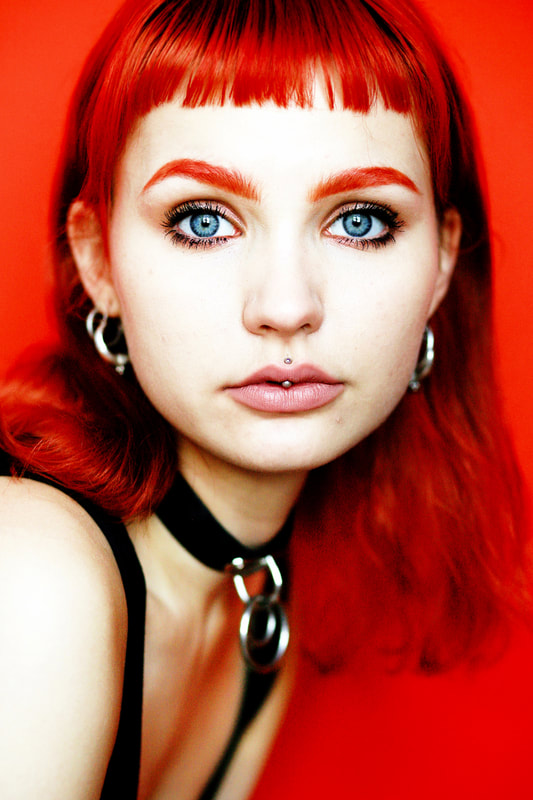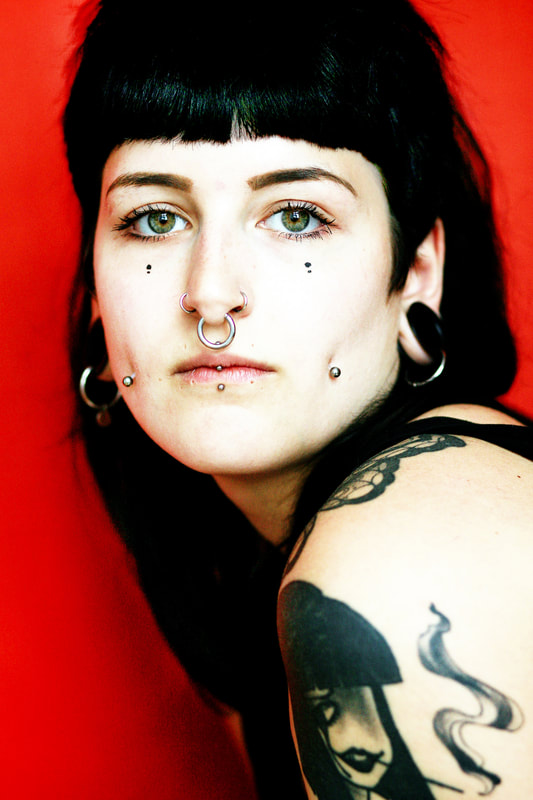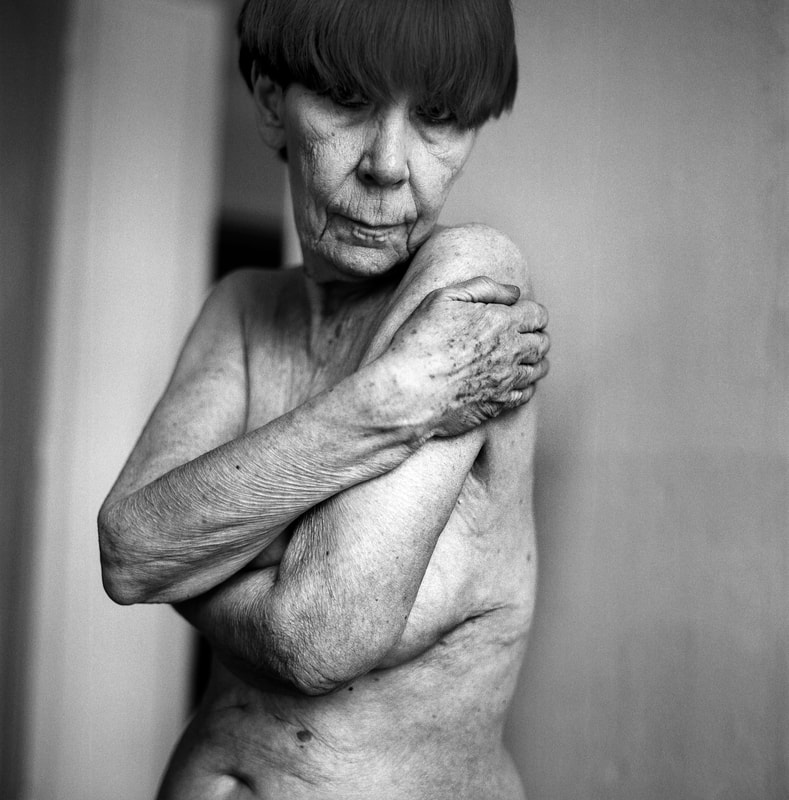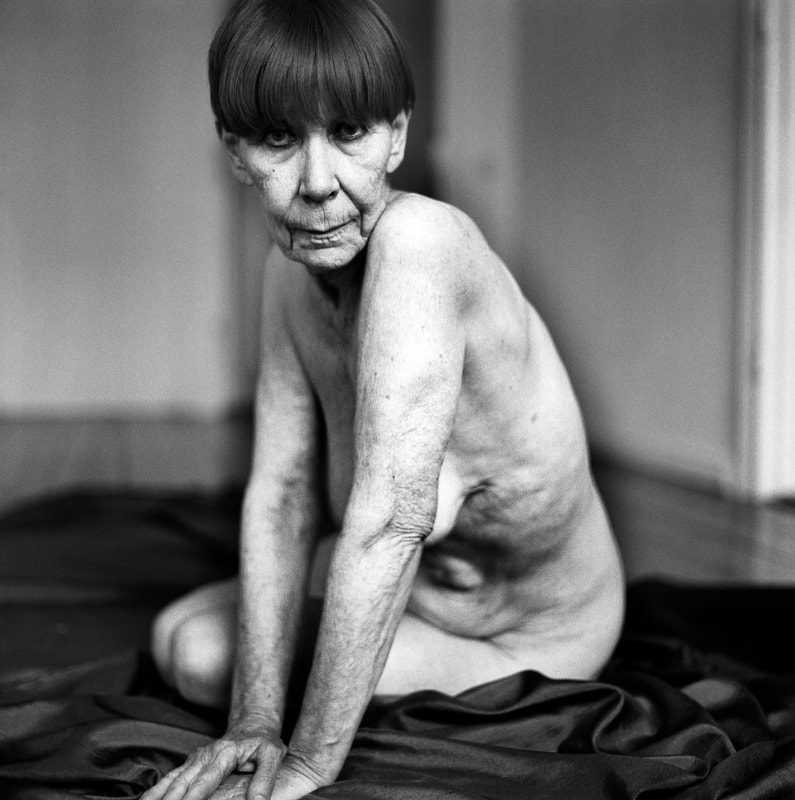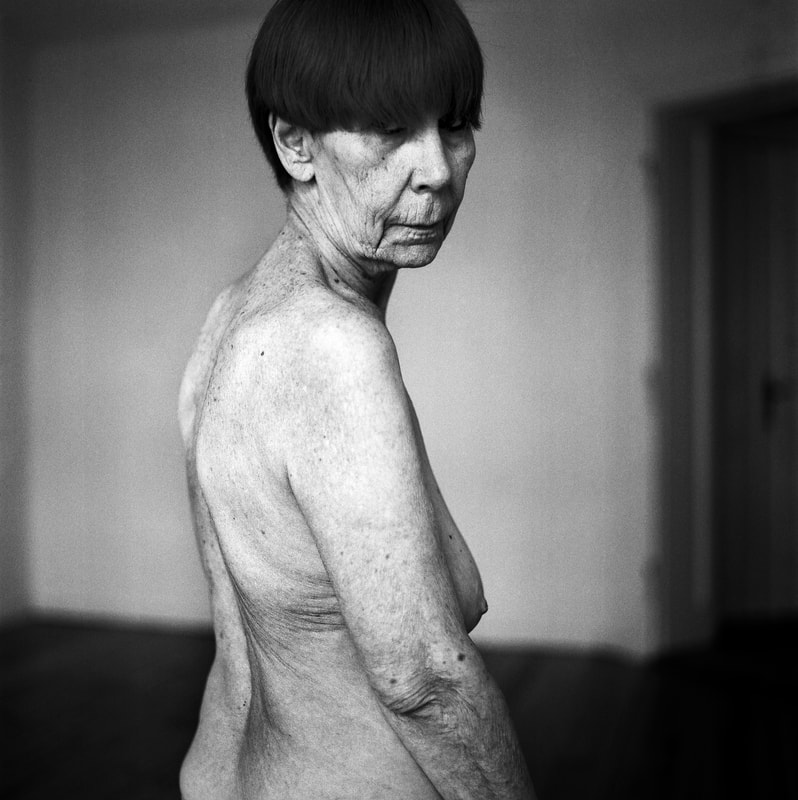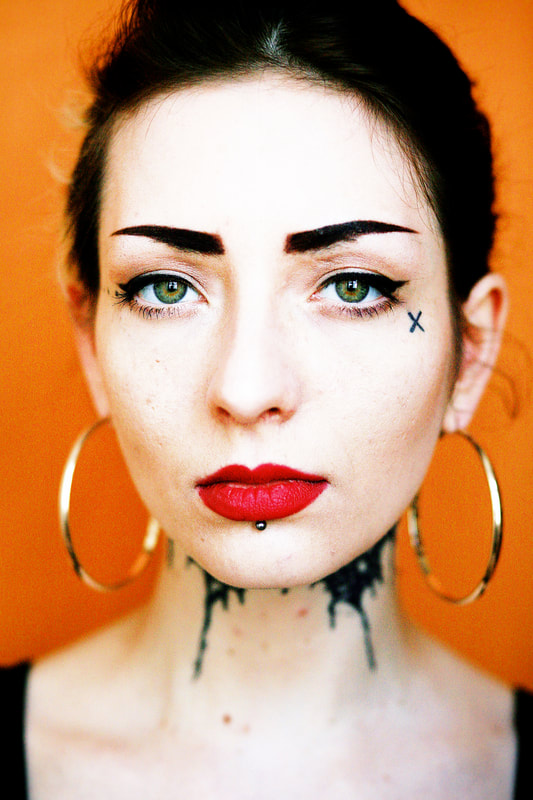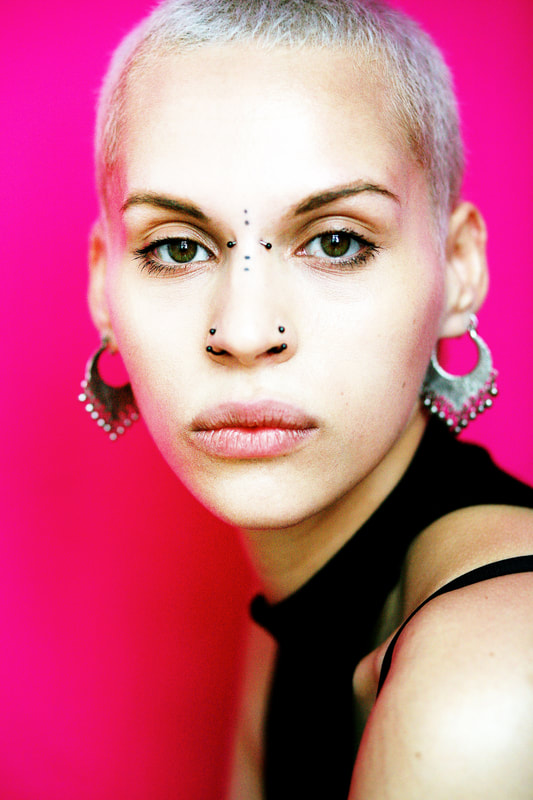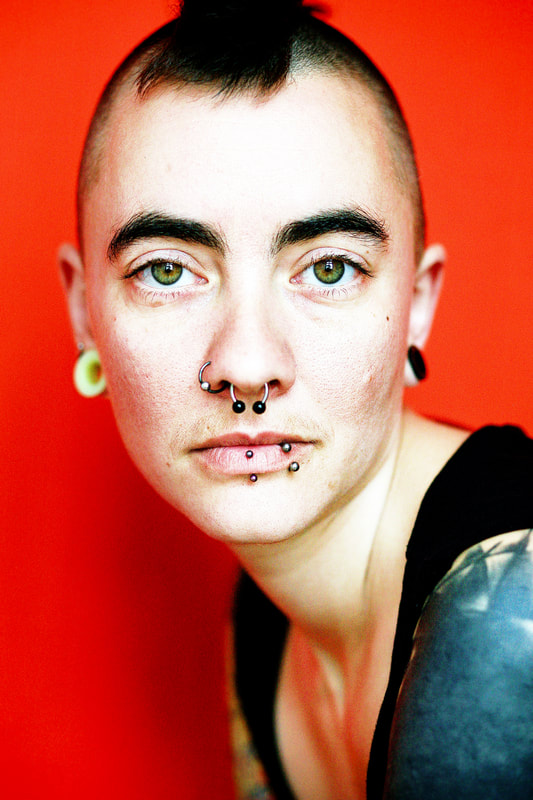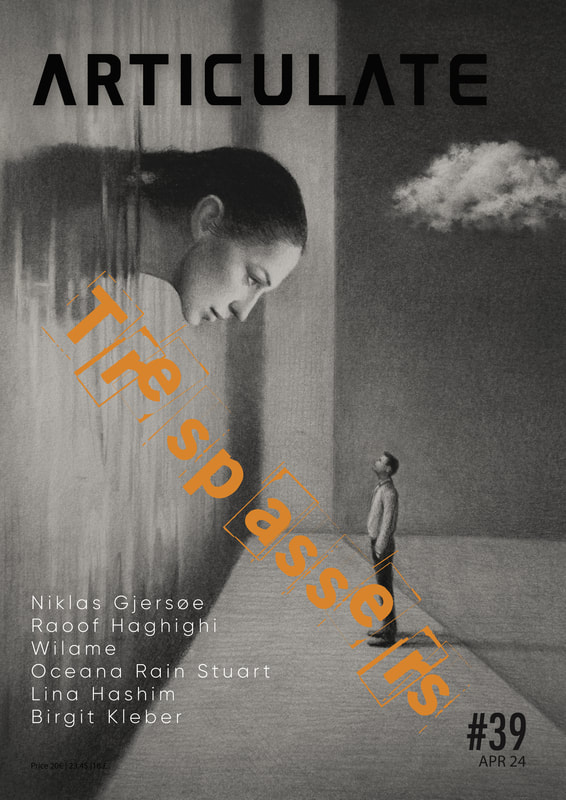Getting to the moment when the masks start to disintegrate ... and the truth of the personality starts to shine through. The journey of Birgit Kleber |
an article written by Caroline Progner Abrahao
This is the moment where German photographer Birgit Kleber (b. 1956) systematically achieves to lead her subjects to. Over the 30+ years of her career, she developed a process which facilitates this emergence and requires the active participation of the person photographed. 'Will they be open to let go and follow me, even if it's uncomfortable?' is always her doubt when she works with a new sitter. Gently but firmly, she will guide her subjects into the right position, starting with the feet and an active stand, holding tension in certain muscles, activating the pelvic floor, or bending forward at specified angles when sitting in a chair. She gives instructions for breathing, sometimes. Then she will face her subject for minutes with her scrutinizing camera on an eye-to-eye level, close up, taking around a dozen pictures. Birgit Kleber's portraits capture this intensity of dialogue between her and her subjects, the mutual stare and eye contact, the intimate setting, the proximity, the tension. She is a master of close-up portraits, creating skillfully the illusion that the subject is looking directly into the eyes of the viewer. Most of her portraits are black and white, with high contrast, the face being the all-pervading center, framed only by a thin and diffuse, blurred background, insignificant clothes. There is no previous makeup sessions, beautifying is not Kleber's goal, she searches for true authenticity. The subjects are usually positioned facing a window, which reflects in their eyes and provides the natural lighting for her work. Sometimes you can even get a glimpse of Birgit and her camera if you look deep enough into their eyes. Everything is captured there, inside the soul's window. In the beginning of the 1980s, Birgit moved from Münster to Berlin to work at the magazine Courage, which was then one of the main platforms of the women's movement. In this moment, she understood that she was not supposed to be a wedding photographer but that photography meant for her unveiling the purest expression of her artistry.
Birgit works in series: 'Every series has one picture that can stand on its own. It can represent all the others. Usually, it's the first one, but not always.' She likes odd numbers. The pictures of her current investigation, still going by the working title 'pull__over,' are hanging in her studio space, neatly arranged in sequence, on an else empty white wall. During the creative process, she will arrange and rearrange them, exclude some, include others. Every new shooting is an attempt to add one additional expression to the internal dialogue of the series. The series is finished when there is nothing more to say, nothing more to add. After finishing a project or series, Birgit strolls around Berlin, mostly without a camera, observing people and situations. In the constant flow of faces and personalities, she searches for a new complex 'emotion/framework' to inspire her. Sometimes she meets people, who make her think 'With you, it could function,' and she invites them to sit for her. After some sessions, usually, she holds one piece in her hands that kicks her, and she knows in which direction to go and what the new project is all about. This moment of 'getting the kick' usually initiates an almost manic state of mind, where everything, except the new project, goes into the back row. Weeks of intense, obsessive work follow. In consecutive sessions with different models, she refines and contrasts the subject of the new series. Experience taught her the importance of red threads in defining a subject matter: the more unifying elements a series has, the clearer the individual pictures stand out. For 'pull_over,' she bought the same pullover in all different sizes and had the models wear it; it unifies the series visually and provides those important red threads. The theme of this new collection is gender fluidity, or soft masculinity and harsh femininity.
Some series, on the other hand, do not have an end in sight: 'Photographers' is an impressive, monumental work, stretching over more than three decades already. It consists of more than 100 portraits of the world's most famous photographers. Staying true to her style, she portrays her colleagues in black and white, the expressive face covering almost all the image. Sophie Calle, Thomas Höpker, Nan Goldin, Richard Mosse, Sebastião Salgado, and Cindy Sherman are just some of the subjects daring to get into the dialogue with Kleber and her intense lens. In 2023 she published the second book of this series, an impressive and systematic compendium of 128 pages, which acts as a stage for the people who normally choose to be on the other side of the spotlight. The book was launched at the Helmut Newton Foundation in February 2023. 'Working with the top artists of my craft provides a special kind of thrill, a feeling of exposure and nakedness"
|
SUPPORTARTICULATE
www.articulate.nu SUPPORT Monday - Friday 8:00 - 16:00 [email protected] +45 30 48 19 81 Head Quarters VAT DK40953191 |
|

